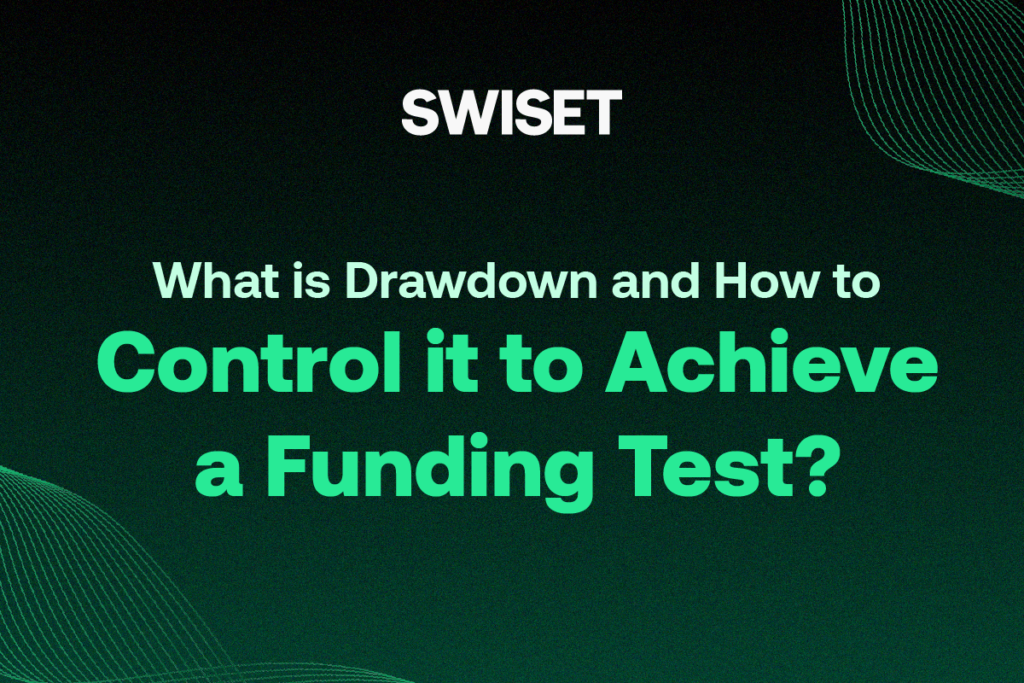What is Drawdown in Trading and How to Control it to Pass a Funded Account Challenge?
When we talk about trading, the focus is usually on profit: how much you've earned, how many pips you've gained, or how many days you've closed in the green. But if there's one metric that truly reveals a trader's maturity, it's the drawdown. Especially in funded account challenges, it’s often not about how much you can earn, but how much loss you can handle without breaking. In this article, we'll break down the concept of drawdown from a technical and psychological angle, giving you key tools to keep it under control and increase your success rate as a funded trader.
- 8 min
- Manuela Palacio

What is Drawdown and Why Does it Matter?
Drawdown is the difference between a peak point of your equity (equity peak) and the lowest value reached after a series of losses.
Types of Drawdown:
Absolute: Difference between initial capital and the lowest point.
Maximum: Largest loss from a peak point to a subsequent low.
Relative (or percentage): Drawdown expressed in % from maximum equity.
For example: if you start with $10,000, go up to $12,000 and then fall to $10,800, your drawdown is $1,200 or 10%.
Types of Drawdown in Funding Firms: Which One is Best for You?
Algo fundamental para pasar una prueba de fondeo es entender que no todas las firmas utilizan el mismo tipo de drawdown (DD). Conocer estos tipos te ayudará a escoger la prueba que mejor se adapte a tu estilo de trading y gestionar tu riesgo de manera efectiva.
End Of Day (EOD) Drawdown
EOD drawdown measures your maximum loss considering only the balance at the close of each trading day. Intraday fluctuations don’t count if you recover by day-end. Ideal for intraday traders.
Trailing Drawdown
This dynamic drawdown follows your account’s peak equity, including profits. If your account grows, your loss limit moves upwards, always maintaining a fixed percentage from the highest equity reached. Encourages constant risk management.
Absolute Drawdown
Absolute drawdown calculates losses from the original starting capital, regardless of how high your account previously climbed. Clear and simple, allowing greater flexibility after significant gains.
Why You Must Know These Drawdown Types Before Choosing a Challenge
Each trader has different trading styles and risk tolerance levels. Scalpers or aggressive intraday traders might prefer EOD DD. Swing traders usually prefer absolute or trailing DD, which fits better with their medium-term risk management approach.
Drawdown and Trader Psychology
A severe drawdown not only impacts your account—it hits your mindset. Insecurity, frustration, and the urge to quickly recover often lead to mistakes such as impulsive entries, illogical increases in position size, and abandoning your trading plan.
Drawdown and Actual Performance: What Prop Firms Look For
Max Drawdown: Evaluates your ability to limit losses.
Profit Factor: Ratio between total gains and losses.
Sharpe Ratio: Measures risk-adjusted performance.
% profitable days: Evaluates stability and consistency.
Trade expectancy: How profitable your trades are on average.
An account with +15% profit but -12% drawdown is less attractive than one with +8% and -3% drawdown.
How to Control and Reduce Your Drawdown
🧠 1.Define a low risk per trade
Maximum 1% of simulated capital per trade. This allows you to survive negative streaks without hitting your challenge limits.
📊 2. Calculate your Expectancy
(Win Rate x Avg Win) – (Loss Rate x Avg Loss)
A positive and stable expectancy often correlates with lower drawdown.
⏳ 3. Limit daily number of trades
Fewer trades = less exposure to emotional mistakes.
💡4. Avoid Trading after significant losses
90% of revenge trading happens after a severe drawdown. Take breaks.
🔍 5. Simulate and analyze before real trading
Swiset allows you to simulate funded account challenges with real data, track your drawdown, evaluate your strategy, and correct before paying for an official test.
¡Simulate your funding challenge for free!
Stop losing money. Don’t risk your own capital—test your skills first.
Conclusion: Lower Drawdown = Greater Longevity
Drawdown is the most honest reflection of your trading. Controlling it not only makes you technically a better trader but also more reliable, consistent, and emotionally resilient. In a world where everyone looks for the ‘secret strategy,’ your real advantage might be knowing how to lose well.
Ready to Measure Your Drawdown Without Risking Real Money?
✅Real conditions ✅Advanced Statistics ✅Professional Risk Control
Trading Drawdown
What is Drawdown
Max Drawdown
Control Drawdown
Reduce Drawdown
Funded Trading Account
Pass Funded Trading Challenge
Risk Management in Trading
Consistent Trading Strategies
Trading Psychology
Risk Per Trade
Risk-adjusted Returns
Professional Trading Tips
Types of drawdown in funded accounts
End of Day (EOD) Drawdown explained
Trailing drawdown definition
Absolute vs Relative Drawdown
How to calculate drawdown in forex
Common mistakes in funded trading challenges
Best drawdown strategy for traders
